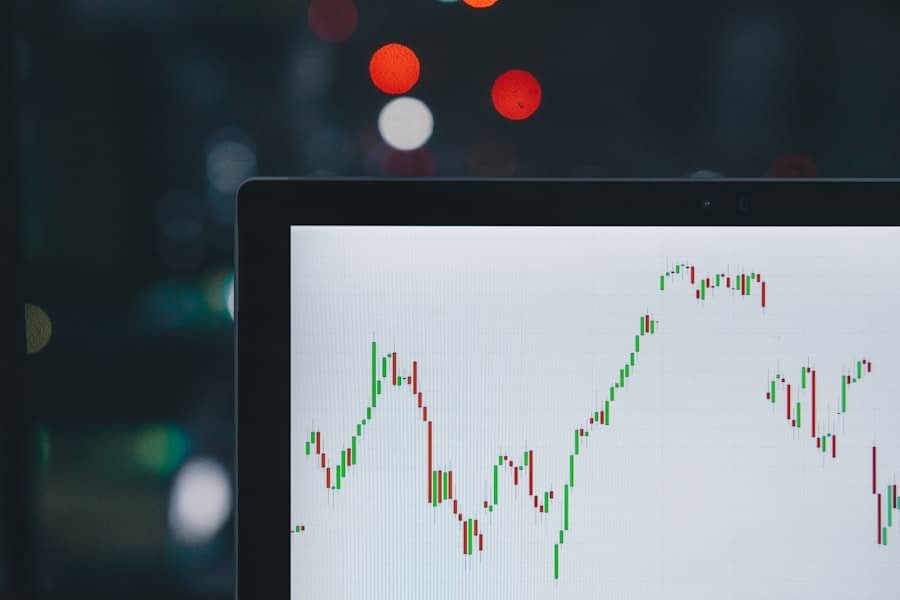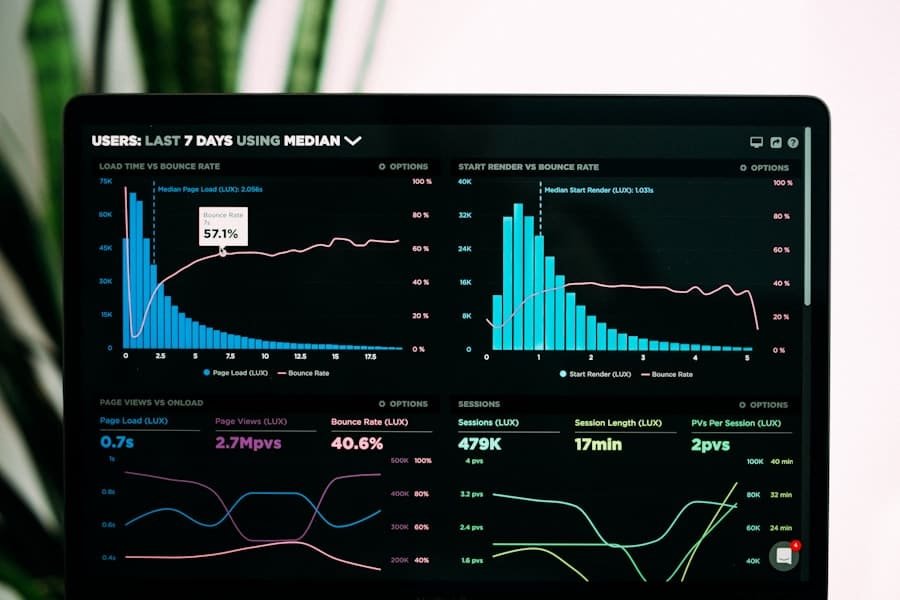Economic indicators are quantitative measures that provide insights into the overall health and performance of an economy. These statistics are utilized by various stakeholders, including economists, policymakers, investors, and businesses, to assess economic conditions and make informed decisions. Economic indicators are categorized into three main types: leading, lagging, and coincident indicators.
Leading indicators serve as early warning signs of potential economic changes, while lagging indicators confirm long-term trends that have already occurred. Coincident indicators reflect the current state of the economy in real-time. Through careful analysis of these indicators, experts can identify patterns and trends that may signal impending economic shifts, such as recessions or periods of growth.
This information allows for more effective economic planning and risk management across various sectors.
Key Takeaways
- Economic indicators are statistics that provide insight into the health of the economy and can help predict future economic trends.
- Leading indicators, such as stock market performance and consumer confidence, can signal an upcoming recession.
- Lagging indicators, like unemployment rates and corporate profits, confirm that a recession has already begun.
- Coincident indicators, such as industrial production and retail sales, provide real-time information about the current state of the economy.
- Monitoring economic indicators is important for businesses and policymakers to make informed decisions and prepare for potential economic downturns.
Leading Indicators of a Recession
Stock Market Performance and Consumer Confidence
A decline in stock prices can signal a lack of confidence in the economy, which may lead to reduced consumer spending and business investment. Similarly, a drop in consumer confidence can indicate that people are less optimistic about the future, leading to decreased spending.
Housing Market Activity and the Yield Curve
A slowdown in the housing market, such as declining home sales and construction activity, can suggest a weakening economy. Additionally, the yield curve, which compares short-term and long-term interest rates, can also be a leading indicator. An inverted yield curve, where short-term rates are higher than long-term rates, has historically preceded recessions.
The Manufacturing Sector and Proactive Measures
Another leading indicator is the manufacturing sector, particularly the Purchasing Managers’ Index (PMI), which measures the health of the manufacturing industry. A decline in the PMI can indicate a contraction in manufacturing activity, which may have ripple effects throughout the economy. By closely monitoring these leading indicators, economists and policymakers can better understand the potential risks of a recession and take appropriate actions to mitigate its impact.
Lagging Indicators of a Recession

Lagging indicators confirm long-term trends in the economy and often reflect changes that have already occurred. These indicators are useful for validating the presence of a recession after it has already begun. Common lagging indicators include unemployment rate, corporate profits, and labor costs.
A rising unemployment rate can indicate that businesses are cutting jobs due to economic slowdown, while declining corporate profits can suggest reduced business activity and lower consumer spending. Additionally, increasing labor costs can put pressure on businesses and lead to reduced hiring and investment. By analyzing these lagging indicators, economists and policymakers can confirm the presence of a recession and assess its severity.
Another important lagging indicator is the GDP growth rate, which measures the overall economic output of a country. A decline in GDP growth can confirm that the economy has entered a recessionary phase. Similarly, changes in consumer spending patterns can also serve as lagging indicators of a recession.
A decrease in consumer spending can signal reduced confidence in the economy and may lead to further economic contraction. By closely monitoring these lagging indicators, economists and policymakers can gain a comprehensive understanding of the current state of the economy and make informed decisions to address the challenges posed by a recession.
Coincident Indicators of a Recession
Coincident indicators provide real-time information about the current state of the economy and are useful for assessing its immediate health. These indicators include measures such as industrial production, retail sales, and personal income. A decline in industrial production can indicate reduced manufacturing activity, which may have widespread implications for the overall economy.
Similarly, decreasing retail sales can suggest that consumers are spending less, which can lead to reduced business activity and job losses. Additionally, changes in personal income can reflect shifts in consumer purchasing power and overall economic well-being. By analyzing these coincident indicators, economists and policymakers can gain insights into the current state of the economy and take timely actions to address any emerging challenges.
Another important coincident indicator is the unemployment rate, which directly reflects the labor market conditions. A rising unemployment rate can indicate that businesses are cutting jobs due to economic slowdown, while a declining unemployment rate may suggest improving economic conditions. Additionally, changes in business inventories can serve as coincident indicators of a recession.
An increase in inventories may indicate that businesses are struggling to sell their products, which can lead to reduced production and job losses. By closely monitoring these coincident indicators, economists and policymakers can stay informed about the current state of the economy and make necessary adjustments to support its recovery.
Using Economic Indicators to Predict a Recession
Economic indicators play a crucial role in predicting recessions by providing valuable insights into the current state of the economy and potential future trends. Leading indicators offer early warnings of potential economic downturns by signaling changes in consumer behavior, business activity, and investor sentiment. By closely monitoring leading indicators such as stock market performance, consumer confidence, and housing market activity, economists and policymakers can anticipate a recession and take proactive measures to mitigate its impact.
Lagging indicators confirm long-term trends in the economy and validate the presence of a recession after it has already begun. By analyzing lagging indicators such as unemployment rate, corporate profits, and GDP growth rate, economists and policymakers can assess the severity of a recession and make informed decisions to address its challenges. Coincident indicators provide real-time information about the current state of the economy and are useful for assessing its immediate health.
By analyzing coincident indicators such as industrial production, retail sales, and unemployment rate, economists and policymakers can gain insights into the current state of the economy and take timely actions to support its recovery.
The Importance of Monitoring Economic Indicators

Understanding the Role of Coincident Indicators
Coincident indicators offer real-time information about the current state of the economy and are useful for assessing its immediate health. By closely monitoring economic indicators, economists and policymakers can make informed decisions to support the economy’s recovery and ensure its long-term stability. Furthermore, monitoring economic indicators is essential for businesses and investors to make informed decisions about their operations and investments.
Using Leading Indicators to Anticipate Changes
By analyzing leading indicators such as stock market performance, consumer confidence, and housing market activity, businesses can anticipate changes in consumer behavior and adjust their strategies accordingly. Similarly, lagging indicators such as unemployment rate and corporate profits provide valuable insights into labor market conditions and business activity.
Staying Informed and Navigating Challenges
Coincident indicators such as industrial production and retail sales offer real-time information about the current state of the economy and help businesses make timely adjustments to their operations. By closely monitoring economic indicators, businesses and investors can stay informed about the current state of the economy and make necessary adjustments to navigate potential challenges posed by recessions.
Conclusion and Summary
In conclusion, economic indicators play a crucial role in understanding the current state of the economy and predicting potential future trends such as recessions. Leading indicators offer early warnings of potential economic downturns by signaling changes in consumer behavior, business activity, and investor sentiment. Lagging indicators confirm long-term trends in the economy and validate the presence of a recession after it has already begun.
Coincident indicators provide real-time information about the current state of the economy and are useful for assessing its immediate health. Monitoring economic indicators is essential for economists, policymakers, businesses, and investors to make informed decisions about their operations, investments, and policy measures. By closely analyzing economic indicators, it is possible to anticipate recessions and take proactive measures to mitigate their impact while supporting the economy’s recovery and long-term stability.
For more information on economic indicators and how they can help predict a recession, check out this article on The Econosphere. The website offers a wealth of resources and insights into the world of economics, including articles, analysis, and commentary on current economic trends. Whether you’re a student, professional, or simply interested in understanding the economy, The Econosphere is a valuable resource for staying informed and making sense of economic indicators.
FAQs
What are economic indicators?
Economic indicators are statistics about the economy that provide insights into its performance and future trends. These indicators can include measures of employment, production, consumer confidence, and more.
How can economic indicators help spot a recession before it happens?
Economic indicators can help spot a recession before it happens by providing early warning signs of economic downturns. For example, a decline in consumer spending, a rise in unemployment, or a decrease in industrial production can indicate a potential recession.
What are some key economic indicators to watch for signs of a recession?
Some key economic indicators to watch for signs of a recession include the unemployment rate, GDP growth, consumer spending, business investment, and manufacturing activity. These indicators can provide valuable insights into the overall health of the economy.
Why is it important to spot a recession before it happens?
Spotting a recession before it happens is important because it allows policymakers, businesses, and individuals to take proactive measures to mitigate its impact. By identifying early warning signs of a recession, stakeholders can make informed decisions to protect themselves and the economy as a whole.
How can individuals and businesses use economic indicators to prepare for a potential recession?
Individuals and businesses can use economic indicators to prepare for a potential recession by adjusting their financial plans, reducing discretionary spending, increasing savings, and diversifying investments. Additionally, businesses can use economic indicators to make strategic decisions about hiring, expansion, and risk management.








